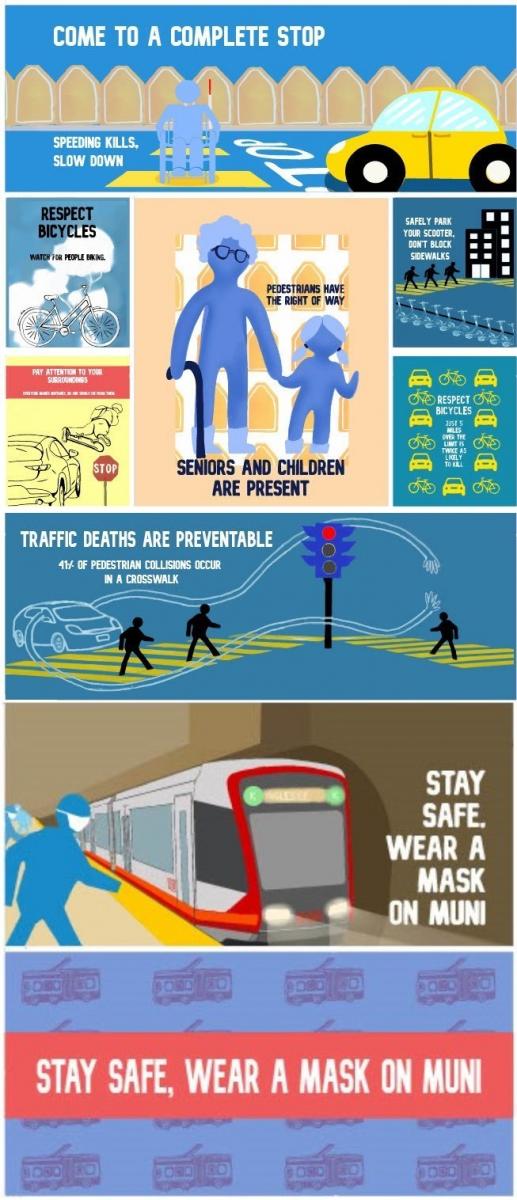By Christine Osorio
Starting in the month of February, Muni buses and transit shelters will feature youth artwork illustrating Vision Zero traffic safety messages. The students are part of Youth Art Exchange (YAX), an arts-education non-profit based whose mission is to support San Francisco’s public high school students in becoming leaders, thinkers, and artists by sharing creative practices with professional artists. As part of Supervisor Norman Yee’s District 7 participatory budget process, YAX students consulted with SFMTA staff to develop traffic safety messages and artwork that reflect their experiences around traffic safety.
Themes highlighted through Youth Voices for Vision Zero SF include general traffic safety such as:
- Yielding to pedestrians in the crosswalk.
- Slowing down.
- Understanding that traffic deaths are preventable.
- Watching for people biking.
- Not blocking the sidewalk with a scooter.
The student artwork also included Covid-specific safety messaging to wear a mask while riding Muni.
Using street signs as inspiration, the students worked with mediums including hand-carved block prints, cyanotype (a printing process that uses light to create a cyan blue color, while areas that do not receive light remain white), and digital illustrations to create the final compositions.
YAX focuses on serving youth of color and low-income youth, and is rooted in the Excelsior neighborhood, which has a high concentration of high schools and the largest population of teenagers in the city. Because [x]space (Youth Art Exchange’s public arts hub) is within walking distance of high schools, and many of the students walk, bike and take Muni to [x]space to attend after-school programs, the students are uniquely positioned to speak about their experiences and insights regarding walking and biking.
Given the limitations of after-school program closures due to Covid-19, Youth Art Exchange closed its in-person activities and pivoted to digital programming in 2020. Youth artists worked remotely and collaboratively, meeting weekly to develop and design this body of artwork around the theme of traffic safety.
Spot these Youth Voices? Post a photo and tag @youthartx, @VisionZeroSF, #YouthVoicesforVisionZero

Artwork by:
Jodi, Abraham Lincoln High School
Hannah MacDonald, Lowell High School
Casey Tang, Abraham Lincoln High School
Published February 24, 2021 at 04:20AM
https://ift.tt/3smXIwA
Nhận xét
Đăng nhận xét